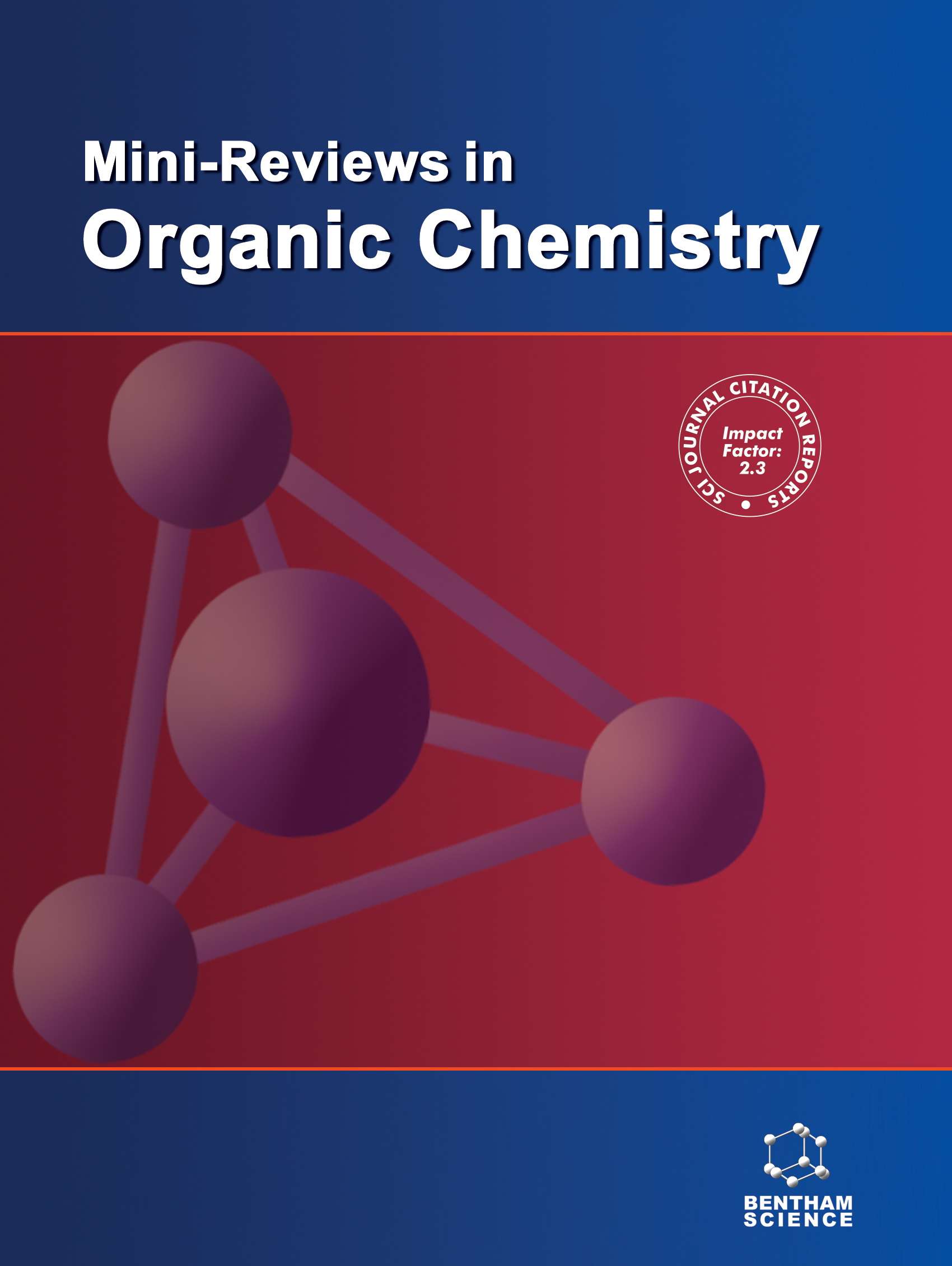Mini-Reviews in Organic Chemistry - Volume 2, Issue 3, 2005
Volume 2, Issue 3, 2005
-
-
Is Circularly Polarized Light an Effective Reagent For Asymmetric Synthesis?
More LessAuthors: Richard M. Pagni and Robert N. ComptonPhotoreactions initiated with circularly polarized light (CPL), which exists in left-handed and righthanded forms and is easy to prepare, has had limited success in asymmetric synthesis although they may model the pre-biotic origin of optically active molecules on the earth. Other approaches including multiphoton excitation with CPL may prove more successful in asymmetric synthesis.
-
-
-
The Synthesis Aplysinopsins, Meridianines, and Related Compounds
More LessAuthors: Branko Stanovnik and Jurij SveteAplysinopsins and meridianines have been isolated from various marine organisms. They exhibit interesting biological activity, such as cytotoxicity and neurotransmission effects. Various synthetic approaches towards these two classes of natural products and their synthetic analogs have been developed. Most syntheses of aplysinopsins, meridianines, and their analogs are based either on coupling of two heterocyclic moieties via the methylidene bridge, or on heterocyclization of indoles, functionalized at position 3.
-
-
-
Cyclohexane-Based Conformationally Controlled Crowns and Podands
More LessCyclohexane-based conformationally controlled ionophores, the emerging new class of molecular switches, provide a new and promising approach to allosteric systems with negative cooperativity.
-
-
-
Cyclodextrins in Nitrosation Chemistry: New Insights of the NO-Transfer Processes
More LessThe chemistry of nitroso compounds has received considerable attention from several directions in recent years. This review will focus on describing the practical aspects, and current and potential applications of cyclodextrins in mechanistic studies of NO-transfer processes. The first section describes some physicochemical aspects of aqueous cyclodextrin solutions that are of crucial importance in relation to mechanistic studies. The next section analyses all types of information that can be obtained from different nitrosation reaction patterns either in acid or basic media, by paying special attention to the nitrosatable substrates and nitrosating agents. Relevant aspects concerning the biological activity of nitroso compounds is also included. The last section covers a detailed analysis of the effects of cyclodextrins on reactions undergone by nitroso compounds, such as hydrolysis or NO-transfer, as well as on reactions that produce nitroso compounds.
-
-
-
Lipases-Promoted Enantioselective Syntheses of Monocyclic Natural Products
More LessAuthors: Honore Monti and Gerard AudranThis review is about using lipases as catalysts in organic synthesis. It provides some specific examples of stereoselective biotransformations used in our group to prepare non racemic chiral building blocks and the utilization of these intermediates to synthesize different target molecules by organic transformations.
-
-
-
Carbohydrate-Derived Surfactants
More LessAuthors: Mauro V. de Almeida and Mireille Le HyaricThe constant need for products obtained from natural raw materials instead of non-renewable petroleum feedstocks has led to a lot of effort on developing new “natural” surfactants. Most important among these are surfactants derived from carbohydrates and plant oils such as coconut or palm kernel. These compounds find applications in cosmetics, food manufacture, biology, etc, and some of them are studied for their liquid crystalline properties.
-
Volumes & issues
-
Volume 22 (2025)
-
Volume 21 (2024)
-
Volume 20 (2023)
-
Volume 19 (2022)
-
Volume 18 (2021)
-
Volume 17 (2020)
-
Volume 16 (2019)
-
Volume 15 (2018)
-
Volume 14 (2017)
-
Volume 13 (2016)
-
Volume 12 (2015)
-
Volume 11 (2014)
-
Volume 10 (2013)
-
Volume 9 (2012)
-
Volume 8 (2011)
-
Volume 7 (2010)
-
Volume 6 (2009)
-
Volume 5 (2008)
-
Volume 4 (2007)
-
Volume 3 (2006)
-
Volume 2 (2005)
-
Volume 1 (2004)
Most Read This Month


